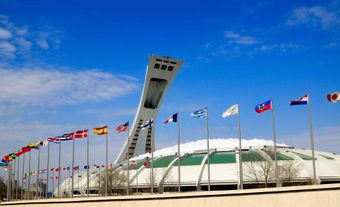The Murray Hill Riot, also referred to as “Montreal’s Night of Terror,” was a major public disturbance that occurred in Montreal on 7 October 1969. (See Riot.) The event lasted approximately 16 hours and was brought about by a strike by the city’s police and firefighters. One police officer was killed, about 30 people were injured, over 100 people were arrested. The riots caused about $2 million in damage. Ultimately the army was called in to restore order. Quebec’s National Assembly also passed a special law ordering the police to return to their jobs. The riot was one of the more violent disturbances to occur in Montreal during a long period of civil unrest. At the time, Montreal was rocked by terrorist bombings, bank robberies (see Crime), protests and police brutality.
Background
In the late 1960s, Montreal was an increasingly violent city where protests were common. The police were contending with Canada’s highest homicide rate. A spate of violent, armed bank robberies and violence between organized crime gangs rocked the city. A terrorist bombing campaign orchestrated by the Front de libération du Quebec (FLQ) was also ongoing between 1963 and 1971. The FLQ conducted about 200 bombings, including one against mayor Jean Drapeau’s house. In addition, civil unrest was rampant. In early 1969, Montreal experienced two major protests: the Sir George Williams Affair in February and the Mouvement McGill-Français demonstrations in March. (See also Quiet Revolution.) Tensions were also high in the city at the time because of the ongoing St. Leonard School Crisis on the status of bilingual schools (see Gendron Commission). Then prime minister Pierre Elliot Trudeau later commented that the Montreal police had been “pretty badly battered around” and that they had the toughest police job in Canada at the time.
Wildcat Strike
Due to dangerous work conditions, Montreal police demanded a pay raise on par with the police of Toronto — $9,200 per year (over $66,000 in 2021). Contract negotiations with the city became largely deadlocked. The city’s arbitration board was called on to help mediate discussions and get the police to sign new contracts. However, the board’s recommendations were deemed inadequate by the Montreal Police Brotherhood (the city’s police union). On 7 October 1969, Montreal’s 3,800 police officers walked off the job. They met up at Montreal’s Paul Sauvé Arena, where 2,400 firefighters also gathered in solidarity. The officers were unhappy and felt they had been given a bad deal.
Though the city was without its police officers and firefighters, it wasn’t completely unprepared. Police from the Sûreté du Québec (Quebec provincial police) and Royal Canadian Mounted Police as well as soldiers from the Canadian Army were deployed to maintain law and order. In addition, Montreal’s banks ordered their branches to lock up most of their cash reserves in vaults and only keep a minimum amount on hand.
Though the day was mostly peaceful, there were nonetheless seven bank robberies, over 30 armed holdups. Over 450 break-ins were reported that day.
Night of Terror
On the evening of 7 October 1969, a taxi driver protest began in front of Montreal City Hall (see also Municipal Government in Canada). Led by an organization who called themselves the Mouvement de libération du taxi, the taxi drivers supported the police. The drivers also argued that Montreal mayor Jean Drapeau was corrupt. They were particularly upset that the Murray Hill Limousine Service secured a lucrative monopoly on limousine and charter bus services between the city and the Dorval Airport (today Montréal-Pierre Elliott Trudeau Airport).
The protest made its way to Murray Hill’s head office and main garage in the neighbourhood of Griffintown. The gathering was joined by activists, members of an outlaw motorcycle club, Quebec separatists (see Francophone nationalism in Quebec), students and other citizens upset with Jean Drapeau. At its height, the crowd was estimated to be 800 people large. A small number of Sûreté du Québec (SQ) officers were dispatched to meet the mob at the Murray Hill garage. The company also had armed guards. They were, however, unable to hold the mob at bay. It was reported that 25 or so SQ officers attempted to quell the riot but were forced to retreat. Demonstrators deliberately set several company buses and limousines on fire. A shoot-out ensued between a man armed with a shotgun defending the garage and some of the protesters. SQ Corporal Robert Dumas was killed. About another dozen or so were wounded. (See Riot.)
After attacking the garage, the mob moved into Montreal’s Central Business District. There, they attacked hotels that benefitted from the exclusive limousine service contract. The rioters then ransacked the Vaisseau d’Or restaurant, which was owned by Jean Drapeau. Crowds joined in the melee and looted nearby shops. Many city blocks were vandalized and looted. Total damage was estimated at $2 million ($14.3 million in 2021).
Aftermath
In response to the unrest, a special session of the Quebec National Assembly passed a special law. The police and firefighters were ordered back to work at midnight on 8 October 1969. Police went back to work immediately. Some officers even made arrests as they returned to their stations. The SQ was given special authority to manage the city’s police for up to a month after the incident. Additional SQ officers and Canadian Army soldiers could also be called upon, if necessary.
An important consequence of the strike was that Montreal’s administration was reorganized. This led to the creation of the Montreal Urban Community ― a metropolitan government that unified the two dozen or so independent police forces on the island into a single police force. With the larger tax base provided by a metropolitan government, Montreal police officers’ salaries doubled to $14,000 by 1974 (over $73,900 in 2021) and were made to match those of the Toronto police.

 Share on Facebook
Share on Facebook Share on X
Share on X Share by Email
Share by Email Share on Google Classroom
Share on Google Classroom
.jpg)

